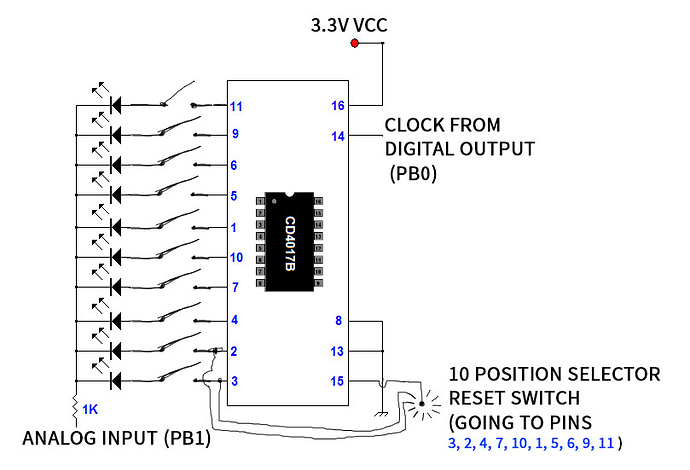Hi, I have a load of CD4017BE chips not being used, and after thinking about it, I wondered if it was possible to use them as an external <11 step sequencer.
They seem to say that they can work from 3V-15V, so I imagined a very simple circuit like this :
The clock is sent by a square LFO, sent out on a digital GPIO.
The sequencer output would be sent to a GPIO input
If I use switches like on this example, I would have a 2nd LFO going twice the speed going into an AND to get each beat (even when it doesn't change)
The reset switch would be hard wired to a 10 position selector switch, so that I can have anything from 1 to 10 steps per sequence
I'm using LED's to get visual feedback from my sequence, and also I hope, protect the circuit.
Has anyone ever tried doing this kind of thing, or does anyone see anything that can go wrong ?


